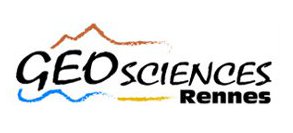Mineral systems prospectivity modelling for gold and nickel in the Halls Creek Orogen, Western Australia
Résumé
Geodynamic models, geological-geophysical interpretations, and isotope analysis illustrate that there are links between the nickel and gold mineral systems in the Halls Creek Orogen, Western Australia. Whole-rock Nd and 40Ar/39Ar analysis of rocks throughout the region, when compared with the geodynamic models suggest that nickel and gold mineralization in the Halls Creek Orogen can be related to basin development and subsequent basin closure during the convergence of North Australian Craton and Kimberley Craton, respectively. Whole-rock Nd analysis confirmed the input of juvenile melts in the centre of the orogen before the 1835–1805 Ma Halls Creek Orogeny, supporting the upwelling of decompression mantle melts during the basin development. These analyses also revealed the spatial links between nickel and gold mineralization and lithological units with positive εNd values. Spatially the link between these mineral systems appears to be related to the presence of deep-seated shear zones that formed early in the history of the orogen and were later reactivated. The results of geodynamic models, geophysical interpretation, and isotopic analysis are used to understand the critical processes in the gold and nickel mineralization, which are presented by predictor maps. The GIS-based knowledge-driven fuzzy logic method used to integrate the predictor maps and create the prospectivity maps. Herein we show that mafic-ultramafic units prospective for nickel mineralization formed by upwelling of decompression mantle melt during crustal thinning and extension during basin development, and typically consist of the most juvenile magmas in the region. Whereas, gold deposits formed during the compressional regime and basin closure, and are located along a major shear zone separating two terranes. This deep crustal-scale shear zone is implied to be the site of multiple stages of deformation that acted as fluid migration pathways during basin closure and subsequent collision. Another critical element that appears to be related to gold prospectivity is the presence of lithologies with a juvenile signature. In contrast to nickel analyses which are closely related to mafic-ultramafic units, the source component seems less influential when attempting to target orogenic gold deposits.
Domaines
Minéralogie
Origine : Fichiers produits par l'(les) auteur(s)
Loading...

